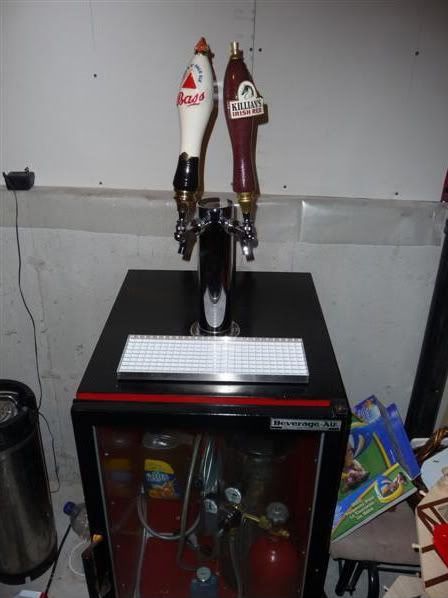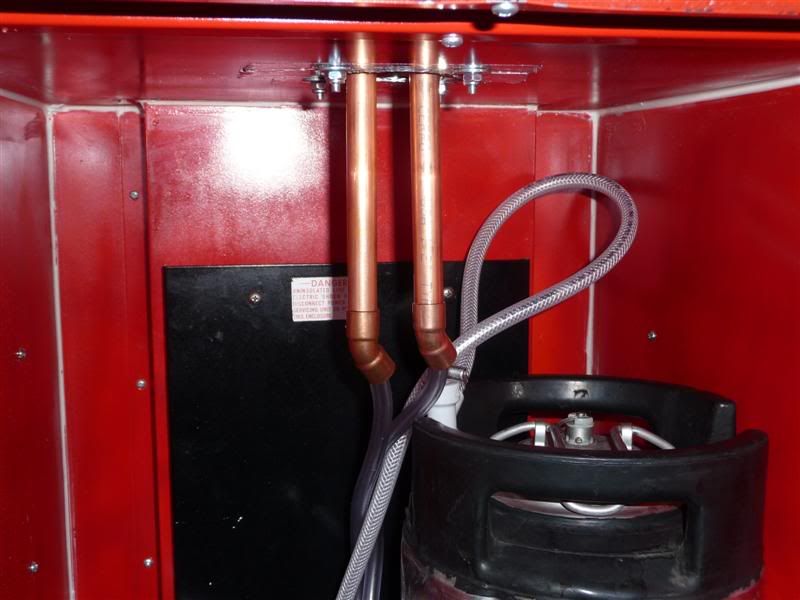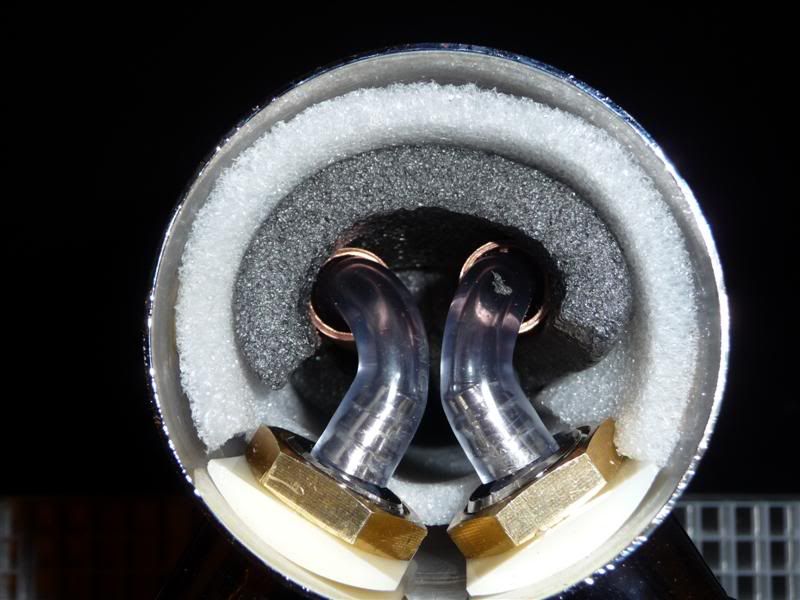Well, just installed a tower and am now looking for reasons for pouring full glasses of foam.
Here is my setup. See pics below, I am setting at 10 PSI with about 4.5 feet of 3/16 line at approximately 38 degrees. Beer is Cerveza and tastes fine with decent carbonation after the foam settles, that is. I lowerer the pressure to about 4 PSI with the same foam, just a slower pour. Then upped the pressure to 15 with the same foam and a very quick pour.
I poured 3 glasses in a row with very little difference between the first and last.
As you can see from the pics, I am using the copper line tower cooling method. My next line of thinking is to actively cool the tower?



And ideas would be appreciated........
Here is my setup. See pics below, I am setting at 10 PSI with about 4.5 feet of 3/16 line at approximately 38 degrees. Beer is Cerveza and tastes fine with decent carbonation after the foam settles, that is. I lowerer the pressure to about 4 PSI with the same foam, just a slower pour. Then upped the pressure to 15 with the same foam and a very quick pour.
I poured 3 glasses in a row with very little difference between the first and last.
As you can see from the pics, I am using the copper line tower cooling method. My next line of thinking is to actively cool the tower?



And ideas would be appreciated........

